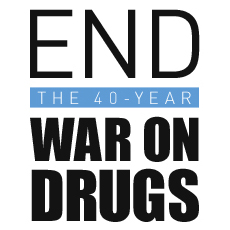40 Years and Over 40 Million Arrests Later, War on Drugs Still Harming Our Communities


June 2011 marks the 40th anniversary of President Richard Nixon's declaration of a "war on drugs" — a war that has cost roughly a trillion dollars, has produced little to no effect on the supply of or demand for drugs in the United States, and has contributed to making America the world's largest incarcerator. Throughout the month, check back daily for posts about the drug war, its victims and what needs to be done to restore fairness and create effective policy.
Cleveland, Ohio, is known for many things: we have a world-class art museum, three professional sports franchises, and we're home to the Rock 'n Roll Hall of Fame.
However, one fact you won't find in Cleveland's tourism brochure is that we are ground zero for the failed war on drugs. After 40 years and over 40 million arrests, the drug war has devastated many communities across the nation — and nowhere is that more evident than Cuyahoga County, which includes Cleveland.
That's why the ACLU of Ohio issued a report today on the effects of the war on drugs in Cleveland. Overcharging, Overspending, Overlooking: Cuyahoga County's Costly War on Drugs sheds new light on the vast racial disparities in Cuyahoga County's justice system treats drug offenders.
Two factors have emerged as determining whether drug offenders in Cuyahoga County are sentenced to jail: geography and race. For instance:
- White offenders from the suburbs or out-of-town are 77 percent more likely than African-American city residents to receive a misdemeanor charge rather than a felony.
- Whites account for nearly three-quarters of the participants in jail diversion programs, such as treatment and job training, in the county. African-Americans only account for a quarter of participants, despite the fact they are overrepresented in the criminal justice system.
- While African-Americans are only about a quarter of the county's total population, they make up nearly three-quarters of those sentenced to prison from Cuyahoga County.
The result has been far too many people, particularly African-Americans, incarcerated because of drugs. Locking up a person costs much more than a diversion program. The annual cost to house an Ohio prisoner is $25,097.40, while diversion costs $1,812. This has become a major drain on state resources, as the state prison system is at 133 percent of its capacity, with the sixth largest prison population nationally.
Those who are sentenced to prison for drug offenses emerge with little access to rehabilitation and educational programs, and struggle to find employment because of their felony convictions. As a result, many of those who serve time because of felony drug convictions end up back in the community with no resources, continued drug problems and little hope to turn their lives around.
The net result of 40 years of "lock 'em up politics" and the war on drugs has been the devastation of communities where people need a hand up, rather than a jail cell. If Cleveland, and the nation, wish to begin to rebuild these neighborhoods, we must put an end to the war on drugs.
Learn more about the war on drugs: Sign up for breaking news alerts, follow us on Twitter, and like us on Facebook.

